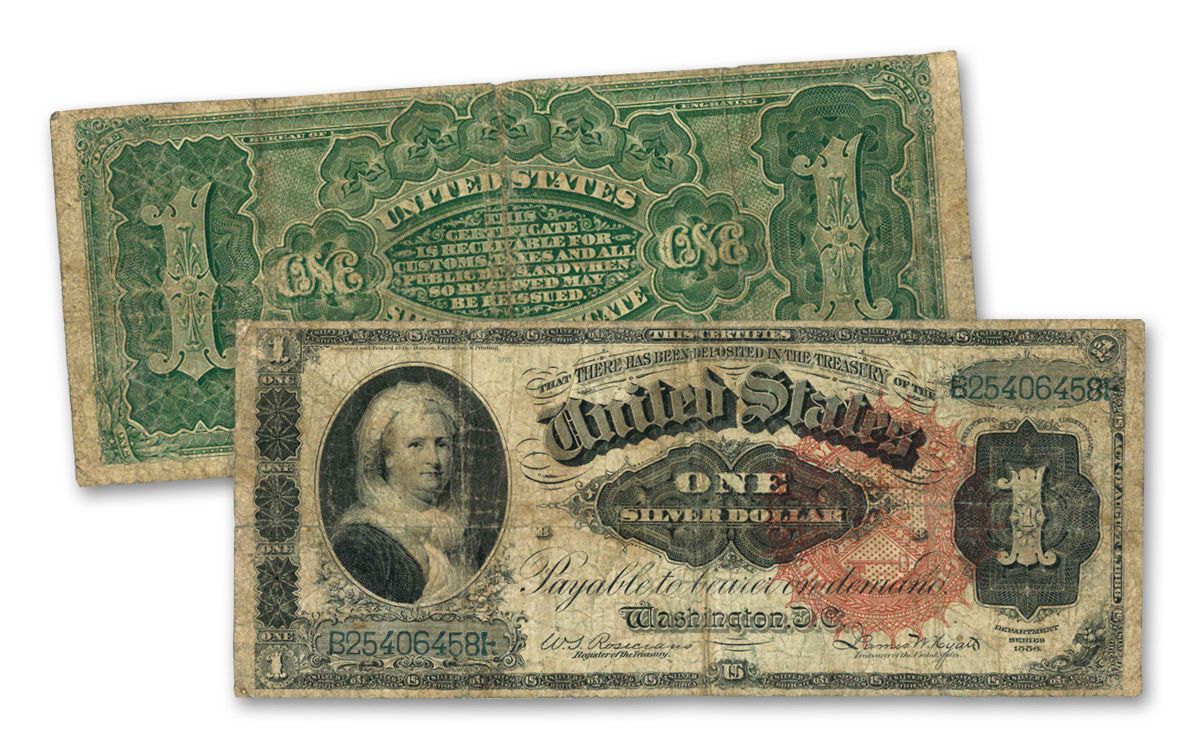1934 $1000 Federal Reserve Note For Sale (PMG AU50+)
$5,800.00
1934 $1000 Federal Reserve Note For Sale (PMG AU50+)
| Year | 1934 |
| Grade | AU50+ |
| Grade Service | PMG |
| Mint Mark | Not Shown |
| Thickness | .1 mm |
| Condition | Almost Uncirculated |
| Face Value | $1,000 |
| Issuing Country | United States |
| Edge Design | Smooth |
| Series | Federal Reserve Note |
| CoA | No |
| Packaging Type | PMG Certified Sleeve |
| Shipping | Free Shipping on Orders Over $199 Tracking and insurance included on all orders |
| Dimensions | 156 mm x 66 mm x 0.1 mm |
Description
1934 $1000 Federal Reserve Note For Sale (PMG AU50+)
One of the largest denominations of paper currency ever issued by the United States, the $1000 Federal Reserve Note was not your average, everyday note for circulation use. In fact, though the Federal Reserve had this denomination in circulation from 1918 to the 1970s, the notes were only used for transactions between the federal government and banks or in bank-to-bank transactions. Surviving specimens are a throwback to a bygone era. Now, 1934 $1000 Federal Reserve Notes in AU50+ condition are available to you online for immediate purchase.
Note Highlights:
- Notes arrive inside protective plastic currency sleeves!
- The first and only redesign of $1000 Federal Reserve Notes!
- Limited availability of certified notes!
- Issued a face value of $1000 (USD) by the United States.
- Bears a Grade of About Uncirculated 50+ from the PMG.
- President Grover Cleveland on the obverse.
- Denomination on the reverse.
- Please note that you could receive notes with AU grades between 50 and 59.
The modern Federal Reserve Note Series was first issued in 1914. The only denominations missing at the time that are currently available in the 21st century were the $1 and $2 Federal Reserve Notes. These were later added in 1963 and 1976, respectively. In the 1918 Series, four denominations were issued that most Americans never even saw firsthand.
The 1918 Series introduced denominations of $500, $1,000, $5,000, and $10,000. These denominations were not intended for everyday use by the American public. Instead, the only handling and circulating of these bills came in bank transfers. These large denominations made it easier for the federal government to transfer money to and from banks, as well as for banks to transfer funds between one another. In an era before wire transfers, eChecks, and online banking, these denominations were critical.
President Grover Cleveland features on the 1934 $1000 Federal Reserve Note. The 1934 Series design was the first and only redesign for the $1000 Federal Reserve Note. Alexander Hamilton initially featured on these notes in the 1918 Series and was replaced with this portrait of President Cleveland for the 1934 Series. Oddly enough, President Cleveland himself had previously been on the 1914 Series $20 Federal Reserve Note, but was replaced in 1929 by President Andrew Jackson. That same portrait of Cleveland was transferred to the 1934 Series $1000 Federal Reserve Note.
The denomination of the note features on the reverse side of 1934 $1000 Federal Reserve Notes. Beginning in the 1960s, the Federal Reserve and Treasury began to remove all of the denominations from the 1918 Series Federal Reserve Note collection from circulation. Banks no longer needed the larger notes for transfers, and by the early 1970s, the vast majority of these notes had been collected and destroyed by the Federal Reserve.
These 1934 $1000 Federal Reserve Notes come with protective plastic currency sleeves. Each one has a certification of About Uncirculated 50+. Notes in this grade range have no more than two heavy fold lines, or may alternatively come with light horizontal and vertical folds. Signs of handling are common.
1934 $1000 Federal Reserve Note For 1934 $1000 Federal Reserve Note For 1934 $1000 Federal Reserve Note For 1934 $1000 Federal Reserve Note For 1934 $1000 Federal Reserve Note For 1934 $1000 Federal Reserve Note For









Reviews
There are no reviews yet.